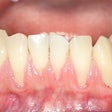Higher educational attainment (EA) may be linked to a lower risk of chronic periodontitis, but targeted intervention may reduce gum disease risk in patients with lower education levels. The study recently was published in BMC Oral Health.
Furthermore, lifestyle and mental health interventions may help reduce the oral health effects of educational disparities, the authors wrote.
“By addressing these modifiable risk factors, it may be possible to reduce the burden of periodontitis and promote more equitable health outcomes,” wrote the authors, led by Yuan-Yuan Chen of Nantong University in China (BMC Oral Health, April 26, 2025, Vol. 25, 647).
Periodontitis develops through a pathway where distal factors like education and income influence intermediate factors such as stress and depression, which in turn affect proximal factors like smoking, alcohol use, and inflammation, they wrote.
Genome-wide association studies were used to perform two-sample univariable Mendelian randomization (MR) analyses to assess the individual and combined effects of risk factors, including body mass index (BMI), smoking, household income, alcohol consumption, major depression, and EA on chronic periodontitis.
Single-nucleotide polymorphisms served as genetic instruments for each risk factor. Data on educational variables were sourced from the Social Science Genetic Association Consortium. Information on chronic periodontitis was obtained from the FinnGen consortium, which included 4,784 cases and 272,252 controls, the authors wrote.
MR analysis provided evidence of a causal link between higher EA and a reduced risk of chronic periodontitis (odds ratio [OR]: 0.72; 95% confidence interval [CI], 0.63 to 0.82; p < 0.001). Daily cigarette smoking was strongly associated with increased risk (β = 0.29; 95% CI, 0.13 to 0.46; p < 0.001). Also, a higher BMI was associated with an increased risk of chronic periodontitis (β = 0.19; 95% CI, 0.02 to 0.36, p = 0.026).
Higher average household income showed a protective effect (β = -0.46; 95% CI, -0.86 to -0.05; p = 0.028). Frequent alcohol consumption was also linked to a greater risk of chronic periodontitis (β = 0.74; 95% CI, 0.18 to 1.29; p = 0.009). Additionally, there was moderate evidence suggesting that major depression may increase periodontitis risk (β = 0.23; 95% CI, 0.02 to 0.44; p = 0.028), they wrote.
Nevertheless, the study had limitations. It focused on a European population, potentially limiting the generalizability of the findings, the authors added.
“This study provides robust evidence supporting a causal relationship between higher EA and a reduced risk of chronic periodontitis, mediated primarily through income, smoking, obesity, alcohol consumption, and depression,” Chen and colleagues concluded.




















